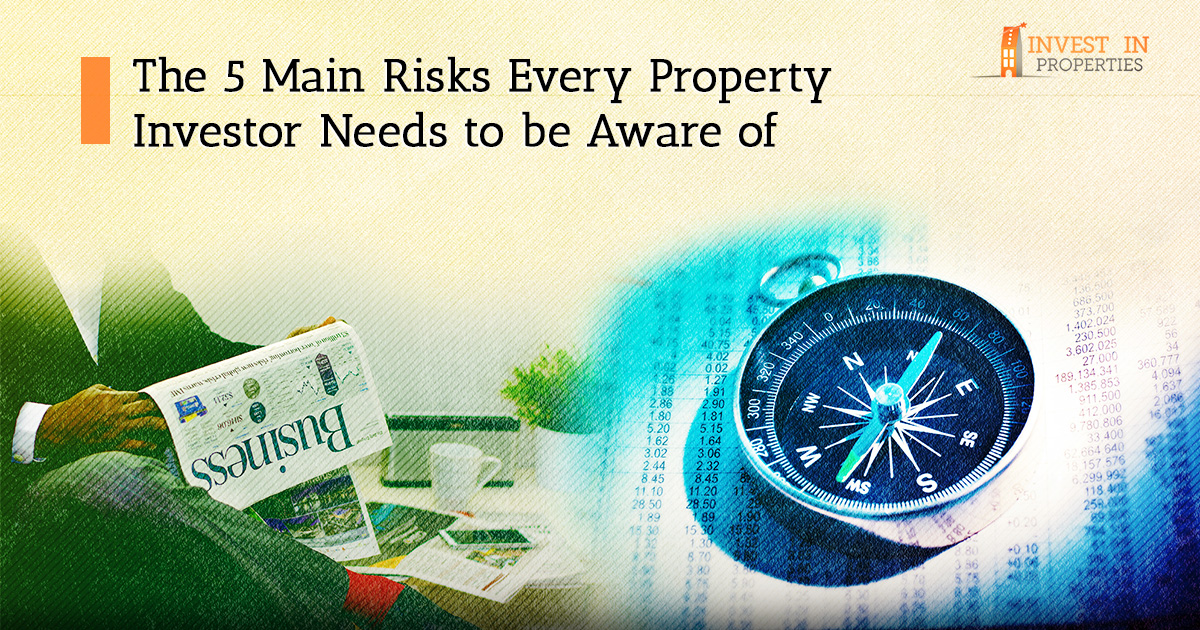
Similar to any other investments, property investments come with its fair share of risks. Here are 5 of the main risks every property investor should know in order to stay ahead of the game.
1. Equity Risk
Simply put, it is a risk that your property price may reduce or achieve poor market growth. There are many contributing factors, including the property location, property type, property configuration and the quality of the property.
Property investment companies would be the first to assure you that with time, give it at least 10 years, the price of the property will increase and the property will achieve good capital growth. Therefore the equity risk, is not really a risk.
Seasoned investors would know that this is not true. The capital growth of a property with a low risk and a solid capital growth has been known to be significantly higher than the property with a high risk and a low capital growth.
Knowing the equity risk beforehand is a surefire way to help you make the right investment choices.
2. Cash Flow Risk
If you are cash rich then this should not be an issue for you. On the other hand, if you have a poor cash flow, then you will have the tendency to experience cash flow risk. In this case, this refers to your inability to cover the monthly or annual costs associated with the property.
Renting out the property is a viable solution to avoid falling into any cash flow problems, though this only works when the rent collected is higher than the costs associated with the property.
However, at the event you are not able to fetch a good rental figure, this is where you need to have a good cash flow in order to cover the shortfall.
Typically, people prefer properties with low cash flow risks, meaning more people will rent or stay in the property for a longer period of time. As for properties with high cash flow risks, people tend to avoid staying there so the chances of having the property rented out will be significantly harder.
3. Settlement Risk
When you are no longer in the position to meet the terms of the contract for a particular property, this means you are facing a settlement risk. When the value of the property prior to the settlement is lower than the property value stated in the contract, this also means you are facing a settlement risk.
The factors that contribute to this risk is perhaps the property was overpriced to begin with or has a slower capital growth. Another reason is there had been changes to the lending policies from banks and lenders. Whatever it is, in order to reach to a settlement, you are required to cover the shortfall.
Knowing the equity risk beforehand is a surefire way to help you make the right investment choices.
4. Valuation Risk
Valuation risk is crucial when you want to get financing from the banks, more equity from the property and selling off the property. This is because banks tend to limit or reject the financing amount for properties with high risk ratings. High risk properties also have the tendency to worth far less than expected by the time you want to sell it.
An example is you bought a property for $500,000 and after a couple of years, the property is evaluated at $420,000. You have already lost $80,000 there. If you have obtained a pre-approval for loan to value ratio (LVR), then the losses will be higher depending on the percentage and the loan amount you have taken.
Contributing factors that cause properties to be valuated with high risks include location, environmental issues, market instability, poor data analysis by those involved with the valuation, and incomplete data.
To prevent this risk, avoid buying off the plan (OTP) properties especially apartments with high risk factors. Another solution is to invest in well-established properties that have a good value. Auction sales also offer a good way to get good valuation as it usually indicate the market demand price. Do your homework, assess the properties carefully and seek good independent advice to make sure you are buying a property in the right suburb, with the right price.
5. Lending Restriction Risk
This particular risk means the banks and lenders impose a restriction on the maximum loan amount you can obtain from them.
For example, you bought a property 2 years ago and applied for a 90% loan to value ratio (LVR). However, the bank or lender only allows you to take 80% loan to value ratio (LVR). The difference of 10% has to be borne by you.
In another case, a few foreign investors who bought properties in 2014 can now no longer borrow funds simply because their currency is no longer valid.
The lending restrictions can also prevent you from borrowing money depending on your income, financial standings and present commitments. If in 2014 you can borrow $400,000 on a $50,000 income while you are still unattached, in 2017, you can probably borrow $200,000 as a married couple with 2 children.

